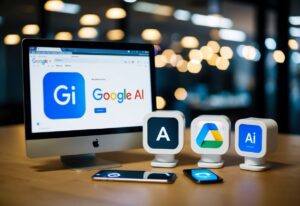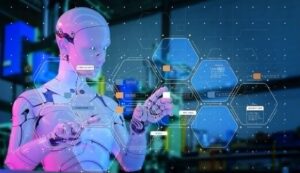AI Bias
Battling AI bias: examples, ethical consideration and practical mitigations.
What is AI Bias?
AI bias arises when artificial intelligence systems produce skewed or unfair outcomes, often due to biases in the data used to train the models or the design of the algorithms themselves. This bias can manifest in different ways, such as favoring certain groups over others or providing inaccurate or harmful predictions for particular demographics.
AI systems learn from historical data, which often contains human biases, whether intentional or inadvertent. As AI becomes more deeply integrated into decision-making processes across sectors like hiring, finance, healthcare, and law enforcement, the impact of these biases becomes increasingly critical to address.
AI bias can be broken down into several categories:
- Data Bias: This occurs when the data used to train an AI model is not representative of the population or scenario it will operate in, leading to skewed predictions.
- Algorithmic Bias: Even with unbiased data, algorithms can be structured in ways that favor certain outcomes or groups, often due to assumptions embedded in the code.
- Societal Bias: These biases arise when AI systems inadvertently mirror societal stereotypes or inequities, reinforcing existing disparities rather than promoting fairness.
Real-Life Examples and Cases of AI Bias
Here are some detailed examples highlighting how AI bias has impacted different industries and what lessons can be drawn from each:
Hiring Algorithms
In 2018, Amazon developed an AI-based recruitment tool intended to streamline candidate selection by evaluating resumes. However, the tool was found to systematically disadvantage female candidates because it was trained on resumes submitted to Amazon over a ten-year period, during which the tech industry, and Amazon itself, had more male applicants. The AI learned to favor male-centric language and downgrade resumes mentioning terms like “women’s chess club,” resulting in gender bias. Amazon eventually discontinued the tool, highlighting the need for diverse training data and bias monitoring in sensitive areas like recruitment.Facial Recognition and Surveillance
Research conducted by MIT Media Lab showed that widely used facial recognition algorithms had significant error rates for people with darker skin tones. One system had a nearly 35% error rate in identifying dark-skinned women compared to almost perfect accuracy for light-skinned men. This type of bias poses serious risks, especially when these technologies are adopted by law enforcement agencies. Misidentifications in surveillance systems can lead to wrongful arrests or profiling, sparking ethical debates around privacy and accountability in AI.Predictive Policing
Predictive policing tools like PredPol analyze historical crime data to identify areas with a higher likelihood of future criminal activity. However, studies have found that these algorithms often over-police minority and low-income neighborhoods, creating feedback loops where increased police presence leads to higher recorded crime rates, reinforcing the original bias. This bias in predictive policing has raised concerns about institutional discrimination and prompted calls for regulatory oversight and careful scrutiny of AI used in the criminal justice system.Healthcare Algorithms
In the U.S., an AI algorithm used to prioritize care management for patients showed bias against Black patients by allocating fewer resources to them compared to white patients with similar health needs. This happened because the algorithm used healthcare spending as a proxy for health needs, despite spending disparities due to historical and systemic healthcare inequalities. Such biases in healthcare algorithms can lead to health disparities and worse outcomes for marginalized communities, prompting a need for more equitable metrics and diverse data sources.Financial Lending Algorithms
AI-driven systems in the finance sector, including those used for credit scoring and loan approvals, have shown biases against certain racial and socioeconomic groups. A Federal Reserve study found that minority applicants were more likely to receive higher interest rates or loan rejections, largely due to biased training data that linked race and income status with creditworthiness. These findings underscore the importance of fairness constraints in financial models, as biased lending practices can exacerbate economic inequality.
Ethical and Legal Implications of AI Bias
The ethical and legal implications of AI bias are extensive, as these biases often lead to discrimination, privacy issues, and transparency challenges. Key considerations include:
Fairness: Biased AI systems can perpetuate social inequities and exacerbate discrimination, leading to unfair treatment of individuals based on race, gender, age, and other protected characteristics.
Accountability: Determining accountability for biased AI outcomes is complex, as the biases can originate from data, algorithms, or even institutional practices. Transparent accountability mechanisms are essential to establish who is responsible when harm is caused.
Transparency and Explainability: Black-box AI models, whose inner workings are not easily understood, pose risks in terms of transparency. Without a clear understanding of how decisions are made, affected individuals may be unable to challenge or understand biased outcomes.
Regulatory Compliance: In response to the ethical and societal risks of AI bias, regulatory bodies are setting standards to promote accountability and fairness. For example, the European Union’s General Data Protection Regulation (GDPR) enforces data protection standards, while proposed AI-specific regulations seek to ensure fair treatment and transparency in AI deployment.
Human Rights and Equity: Biased AI can infringe upon individuals’ rights to equality and non-discrimination, raising concerns about human rights violations, particularly in critical areas like justice, finance, and healthcare.
Practical Ways to Mitigate AI Bias
Effectively reducing AI bias requires a combination of technical, procedural, and ethical measures:
Use Diverse and Representative Datasets
Ensuring that AI training datasets are representative of diverse demographics is essential for minimizing bias. Inclusive data should account for variations in age, race, gender, socioeconomic status, and more to prevent skewed outcomes.Implement Algorithm Audits and Bias Testing
Conducting regular bias audits, both internally and through third parties, allows organizations to identify and address biases in their algorithms. Using fairness metrics, like disparate impact ratio or equalized odds, can help evaluate whether an AI model performs equitably across different groups.Adopt Transparency Practices in Model Building
By documenting the data sources, algorithmic assumptions, and training processes, organizations can make AI systems more transparent. Clear explanations enable stakeholders to assess the model’s fairness and offer a basis for holding AI systems accountable.Incorporate Human Oversight and Intervention
Implementing human-in-the-loop (HITL) systems allows human decision-makers to oversee and intervene in AI-driven processes. This is particularly valuable in high-stakes applications like criminal justice or hiring, where human judgment can help counteract automated bias.Introduce Fairness Constraints in Model Training
Fairness constraints, such as modifying loss functions or reweighting samples, can help models minimize bias. For instance, rebalancing samples from underrepresented groups or removing proxy variables associated with bias can significantly improve fairness in outputs.Engage in Ongoing Monitoring and Adaptation
Bias in AI systems can evolve over time, especially as social norms and data sources change. Regular monitoring and updates allow organizations to adapt their models to new standards of fairness, ensuring sustained equitable performance.
FAQs
How does AI bias impact my daily life?
AI bias can affect various aspects of daily life, including job opportunities, credit access, healthcare quality, and legal outcomes. For instance, biased hiring algorithms may overlook qualified candidates, while skewed lending models can limit loan access for certain groups.Can AI ever be completely unbiased?
While it’s challenging to create an entirely unbiased AI system, using diverse data, regular audits, and transparency measures can significantly reduce biases, making AI systems fairer and more reliable.Why is it essential to mitigate AI bias?
Addressing AI bias is crucial to prevent discrimination, uphold ethical standards, and ensure that AI technologies foster inclusivity and trust, rather than perpetuate harm.What role do regulations play in combating AI bias?
Regulations provide standards and frameworks for accountability, mandating transparency and fairness in AI. For example, the GDPR and emerging AI-specific laws aim to protect individuals’ rights and promote fair AI practices.How can organizations start addressing AI bias now?
Organizations can begin by implementing bias audits, diversifying datasets, and involving human oversight in critical AI systems. Engaging with best practices early helps ensure more ethical and equitable AI use.


















